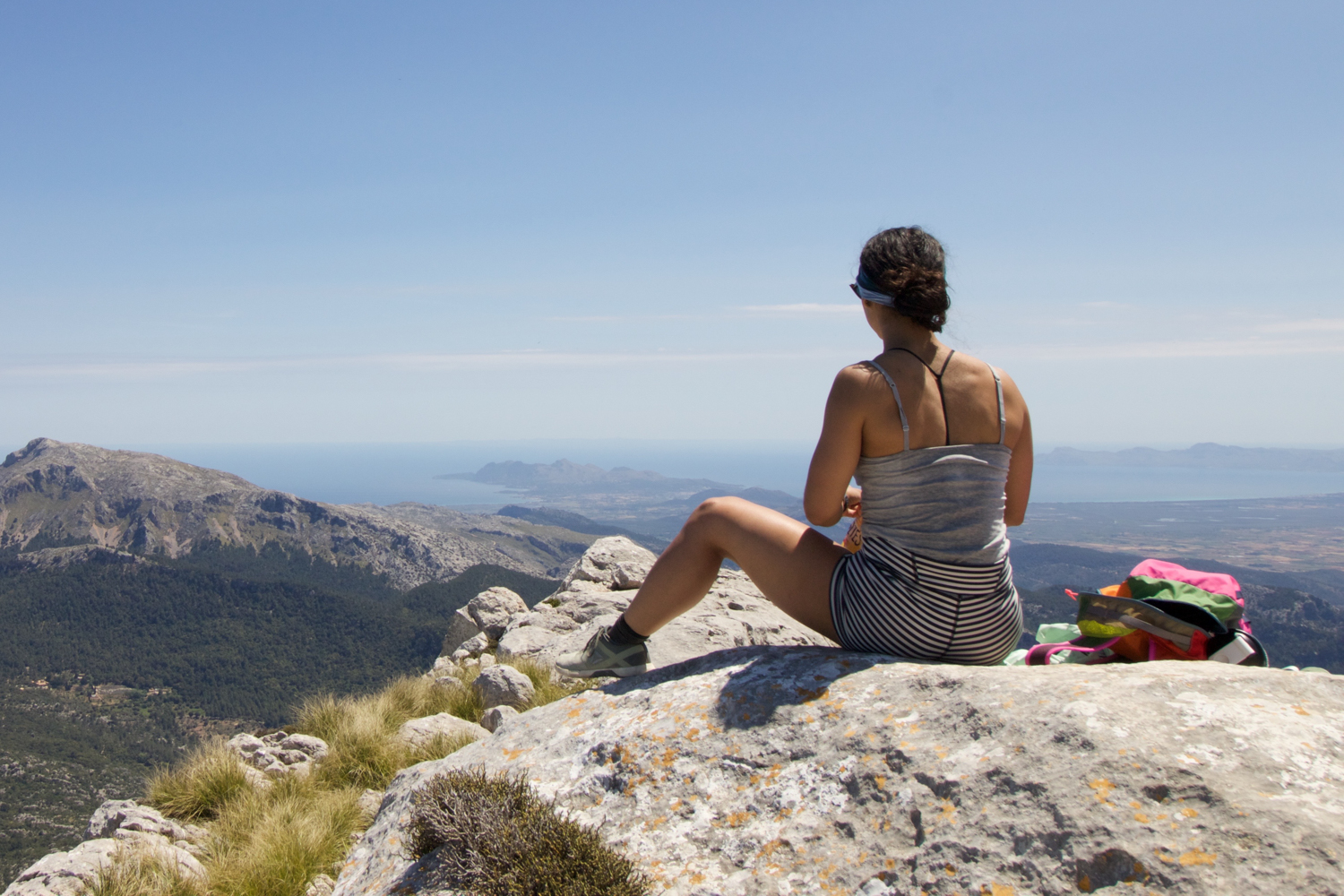Solo Hiking How-To’s

Considering Going Solo? Advice for Your First Time Hitting the Trail on Your Own
Words & photos by Alexandra Garcia
I didn’t know what “hiking” was until I moved to the mainland United States from Puerto Rico in 2015. Back home, I spent a lot of time outdoors – traversing tropical rainforests, coastal jungles and beaches, virgin bamboo forest in my family’s farm – but it was never seen as an activity we did, more like places we went to together.
When I moved to Virginia in 2015, I gravitated towards the trails of Shenandoah National Park and the George Washington National Forest as a way to connect the pieces of what I felt I lost by way of immigration. Almost from the beginning, I went alone, at first covering 5-8 mile day hikes, later transitioning to full-day hikes and multi-day backpacking trips. I don’t remember making the decision to go for it solo; between having few connections in the area and my partner’s shift work schedule making it difficult for him to join me on weekend hikes, the conditions were all there for me to only go alone, so that’s what I did. Over the years, solo hiking, solo trail running, and solo backpacking have been staples of my outdoor lifestyle. As a woman of color still learning her place in this world and country, solo hiking is an escape to just be a human searching to connect with the natural surroundings she has the privilege of exploring.
I’ve never questioned hiking alone, but with experience, I’ve come to understand why it can be such a scary concept for others to grasp. There’s a lot to consider before heading out for a hike, never mind when it’s all one person’s responsibility. The activity certainly carries risk, but risks are adaptive and can yield positive outcomes. With the right preparation and an eager attitude, solo hiking can be an immersive, empowering, grounding experience. I’ve gathered my best advice for anyone who’s considering giving solo hiking a try this spring and summer!

Our solo hiking expert, Alexandra Garcia in Shenandoah National Park, Virginia
Getting Ready for a Solo Hike
Define Your Plan
- As you’re getting comfortable with solo hiking, prioritize accessible or familiar trails that offer a good time but don’t challenge your skill level in order to reduce the burden of research or planning needed to be well prepared.
- Once you’ve chosen a trail, do some research. When I plan a solo hike, I read AllTrails reviews, verify route conditions on websites, monitor the weather, and review the Google Maps details of the area.
Gather Your Essentials
- Pack the 10 essential items for hiking according to your needs. I download the map of the hike through AllTrails, GAIA GPS, or OnXBackcountry, and if the hike is in a rugged or remote area, I’ll bring a physical topo map as a backup.
- If you plan on going on a long hike and use your phone along the trail (as navigation, for pictures, etc.), consider taking a power bank to keep your phone charged.
Practice Some “Risk Management” Thinking
- Plans rarely go exactly as envisioned. When you preemptively think of ways things could go wrong, you can create systems or contingency plans to mitigate or eliminate certain risks from occurring. When I plan a solo hike, I ask myself the following questions:
- What are 5 things that could go wrong?
- What can I do to prevent those situations from happening?
- If one or more still happen, do I feel confident in my tools and abilities to manage the situation?
Leave Details of Your Plans With Someone You Trust
- I send my partner the name of the trail, its length and elevation gain, where I intend to park my vehicle, and an expected hiking time. When I go on long day hikes, I let him know of “bailout trails” I may take to shorten the distance or get out fast if I need or want to. I provide a description of my clothing or send a selfie before I leave. In the event of an emergency, this information could mean getting rescued or receiving aid faster.

Alexandra in the North Cascades in Washington
At the Trailhead and Beyond
Once you’re at the trailhead, the fun begins! While the bulk work has been done, the following are a few friendly reminders to keep you safe and excited for your upcoming solo adventures:
Stay On Trail
- Remember you prepared, planned, and relayed information of your whereabouts based on a certain trail – distance and time. Adding mileage or going off trail is a deviation of that plan. If you can’t communicate this change with your trusted contact, it’s best to stay on course and cover more ground some other time.
Trust Yourself
- Remember you are capable, strong, and prepared… and you can turn around. Trust your instincts if something doesn’t feel right.
Reach Out for Help
- Chances are, while you went out for a solo hike, you won’t be alone on the trail. Be open to meeting people and requesting their help when you need it.

Alexandra enjoying the rewards of solo hiking.
And Above All Else…
Preparation isn’t infallible, but practicing these suggestions will help you be strategic and safe while experiencing nature in a unique way. Summer is just around the corner, and with that, more accessible opportunities to enjoy the outdoors. Whether with company or alone, I hope you’re able to venture out and connect with the land and communities that surround you. Happy hiking!

Be the first to comment